Products are selected by our editors, we may earn commission from links on this page.
Dogs are furry enigmas wrapped in wagging tails. They don’t come with instruction manuals, so it’s up to us to figure out why they do the bizarre, lovable things they do. Let’s dive into the most common dog behaviors, decode their hidden meanings, and have a laugh along the way.
Why Do Dogs Tilt Their Heads?

That adorable head tilt is your dog’s way of saying, “I’m listening… sort of.” They adjust their ears to better understand sounds or interpret your baffling human language.
This behavior might also mean your dog’s genuinely curious. They’re thinking, “What’s this noise, and why are you talking like you swallowed helium?” It’s a pure canine concentration at its cutest.
Let’s be honest, though—they know the head tilt melts your heart. Whether or not they understand you, they’re reeling you in for extra pets and maybe a treat.
Why Do Dogs Bark at Nothing?

When your dog barks at “nothing,” they’re likely hearing or smelling something you can’t. Their super senses pick up faint sounds or smells that escapes your human-level radar. Some say dogs can sense ghosts!
Well, let’s not be spooky. Sometimes, barking is just your dog’s way of saying, “I’m bored—let’s stir up some drama!” It’s like their version of yelling into the void to see what happens.
And occasionally, your dog might just be trolling you. They bark, you panic, and they laugh (inwardly). It’s the ultimate prank for your overly alert pup. (Trolling isn’t just a human activity! Bleh!)
Why Do Dogs Roll in Smelly Stuff?

Wait! Before you react, “Yuck!” dogs rolling in gross stuff in human language translates, “Look at me, I’m one with nature!” It’s instinctive, often masking their scent as their wild ancestors once did.
For some dogs, it’s pure joy. That muddy puddle? Eau de Perfection. They love the smell, even if it leaves you scrambling for the shampoo bottle.
Unfortunately for you, they’re oblivious to your disgust. Their goal isn’t cleanliness—it’s self-expression through dirt, grass, and anything else gloriously stinky.
Why Do Dogs Dig?

We’re gonna be straightforward. Dogs just dig because it’s in their DNA. Whether they’re hiding a “treasure,” making a cool spot, or just indulging their inner landscaper, digging is all about instinct and fun.
Sometimes, digging is boredom-driven. If your dog’s digging trenches worthy of a WWI battlefield, they’re likely crying out for toys, stimulation, or a really good belly rub. If humans need attention, our dogs, too!
You can redirect this behavior by offering a designated digging area or keeping them busy with mental challenges. Think of it as channeling their inner archaeologist responsibly.
Why Do Dogs Chase Their Tails?
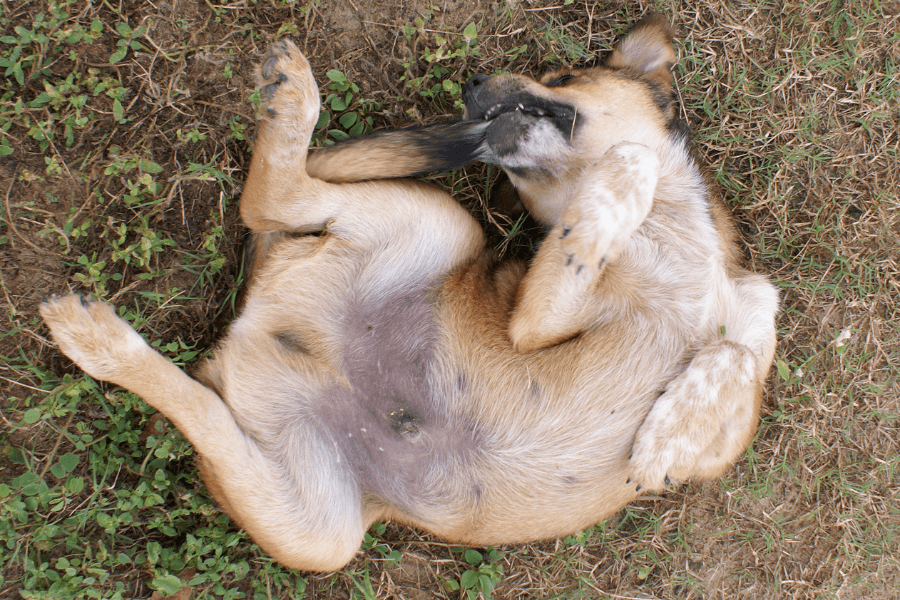
Tail-chasing is your dog’s version of playing tag with themselves. (Aren’t they so independent they might not need us anymore?) It’s a hilarious way to burn off energy when boredom strikes or entertainment is lacking.
Puppies love this game! They don’t realize the tail is part of them. I mean, how often do dogs see themselves in the mirror? Not so much! A never-ending treasure hunt they can’t quite win.
If tail-chasing becomes obsessive, it might signal an underlying issue like anxiety. But most of the time, it’s harmless fun and a source of endless laughter for you.
Why Do Dogs Sniff Butts?

Butt-sniffing might be awkward for humans, but for dogs… nah, it’s a greeting ritual! It’s their way of saying, “Hi, what’s your story? Nice to smell you!”
Humans are not the only nosy human beings! When dogs do this, it provides them with critical information about other dogs’ health, mood, and diet. It’s their version of exchanging business cards, just much less formal.
So, while it may seem weird to you, it’s all science to them. They’re gathering intel in the most direct (and smelly) way possible. We, humans, should stay in our lane.
Why Do Dogs Wag Their Tails?

Tail-wagging isn’t always about happiness. A fast, loose wag says, “Yay, life is amazing!” while a stiff, slow wag might mean, “I’m unsure; proceed with caution.” Always know the difference.
The direction of the wag matters, too! A wag leaning right is usually positive, while leftward wags might indicate nervousness. Yes, even their tails can talk! You just have to observe properly.
Think of their tail as Vada’s mood ring in My Girl. Whether they’re ecstatic, confused, or cautiously curious, that wagging appendage is their not-so-secret communication tool.
Why Do Dogs Lick People?
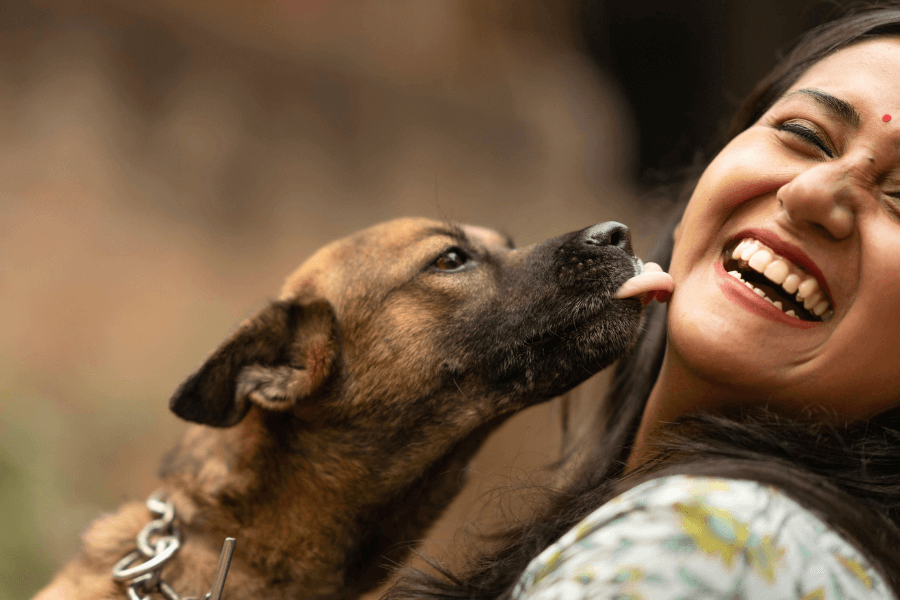
When your dog licks you, they’re either showing affection or subtly saying, “You taste salty, and I’m into it.” It’s both sweet and slightly…gross. Pick a struggle.
Licking also serves as a way to bond with you. Puppies lick their mothers, so when they lick you, it’s their version of family love—just wetter. (They can’t speak, so they lick!)
If the licking becomes too much, redirect their attention to toys or chewables. They’ll still love you, even without the slobber marathon.
Why Do Dogs Have Zoomies?
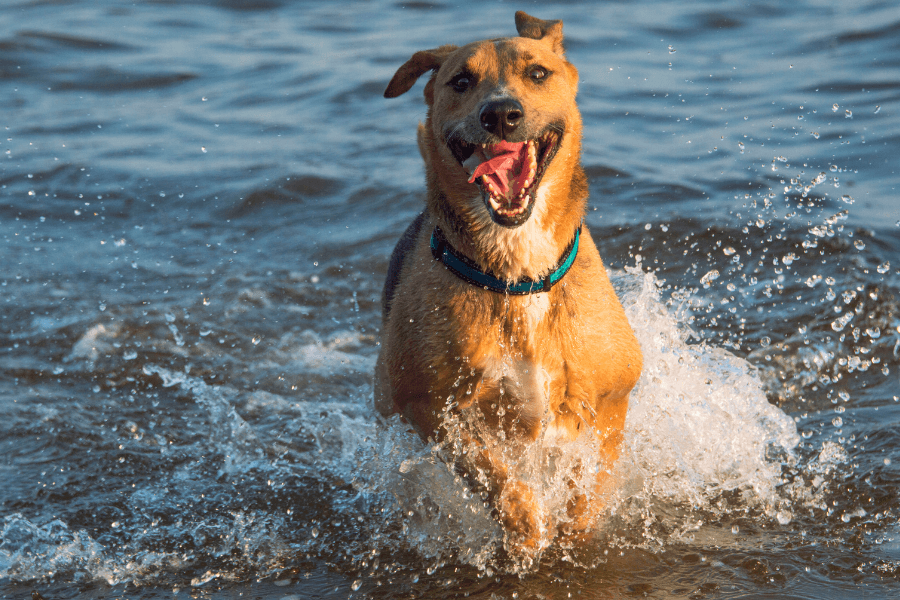
Zoomies—those random bursts of chaotic energy—are your dog’s way of celebrating life. It’s like a furry explosion of happiness, often triggered by baths or pent-up excitement.
These episodes are completely normal and healthy, so don’t panic! They’re burning off energy in the most entertaining way possible, zooming around like a four-legged tornado.
Let them enjoy the madness, but ensure a safe space. Zoomies and slippery floors don’t mix unless you want a live-action cartoon crash scene. Oh, they might get injured, too!
Why Do Dogs Sleep in Weird Positions?

Your dog’s sleep position says a lot about them. (Could it be the same with humans?) Belly-up sleepers are trusting and relaxed, while curled-up dogs conserve warmth and channel their inner wolf.
The “half-off-the-couch” sleepers? They’re just maximizing chaos. It’s all about comfort and their quirky personalities shining through, even when snoozing.
Well, just let them sleep how they like! Upside down, curled-up, or sideways, their weird poses are part of their charm—and great for photo ops. Just don’t let them know you took a stolen photo!
Why Do Dogs Follow You Everywhere?

While some fur parents might feel annoyed when their dogs follow them everywhere, let us remind you that it’s their way of staying close to their favorite human! You’re their world!
It can also mean that they’re curious about you. “Where are you going? Will there be snacks? Can I help?” They’re basically your enthusiastic (and nosy) assistant. We certainly couldn’t resist that!
However, if your dog becomes obsessive, it could signal separation anxiety. Gradual training can help, but let’s be real—you secretly love having a personal bodyguard, and they just miss you… too much!
Why Do Dogs Shake Their Bodies?
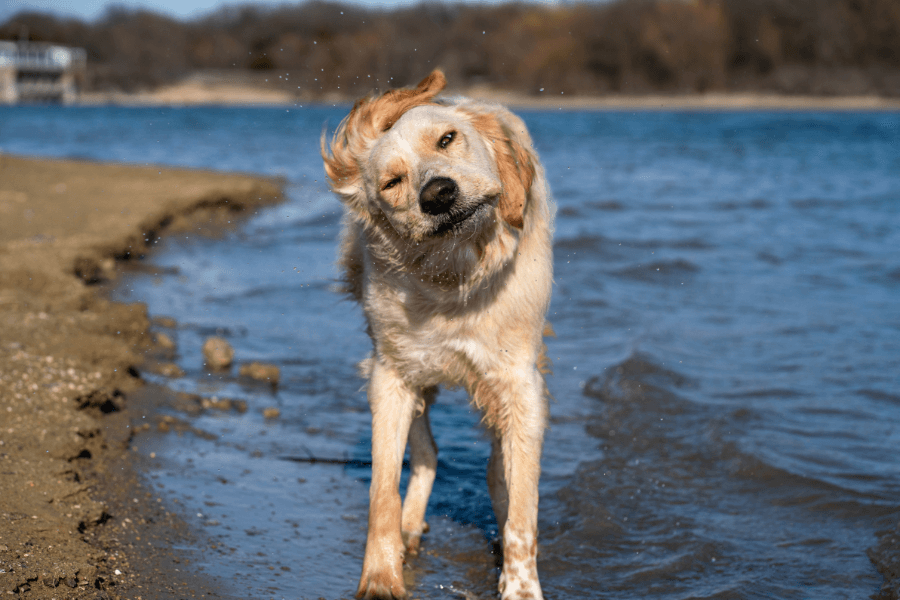
When your dog gives a full-body shake, it’s their way of resetting. Regardless of whether they’re drying off or shaking off stress, it’s like their version of hitting “refresh.”
Dogs also shake to realign their fur or get rid of any itchiness. Like us, we scratch our bodies if we feel itchy. Since dogs couldn’t reach their bodies, shaking will do! It’s surprisingly effective!
If you think their shaking becomes excessive, it might indicate discomfort or anxiety. Keep an eye out, but otherwise, enjoy the fluff tornado and its quirky sense of personal maintenance.
Why Do Dogs Bring You Toys?

Ever wonder why dogs suddenly leave toys right at your feet? We’ve got that answered! It’s an invitation to bond. They’re saying, “Let’s share this moment. Oh, and I’m ready to win.”
This behavior also shows trust. They’re handing over their prized possession because they know you’ll handle it with care (or at least toss it properly). Take this as a compliment!
If they’re constantly delivering toys, they might be bored. This is a sign that you must engage with them because ignoring those puppy eyes is scientifically impossible!
Why Do Dogs Love Squeaky Toys?

Squeaky toys bring out your dog’s primal instincts. The sound mimics prey, which triggers their natural drive to hunt, shake, and pounce like a mini predator.
For dogs, the squeak is also instant feedback, albeit fake. Every chomp says, “Yes, you’re doing great!” It’s a never-ending loop of reward and satisfaction. Just don’t tell them it’s not true!
All you need to do is tolerate the noise and let them enjoy themselves. Squeaky toys are fun, stimulating, and a harmless way for your pup to show off its wild side.
Why Do Dogs Roll Over?
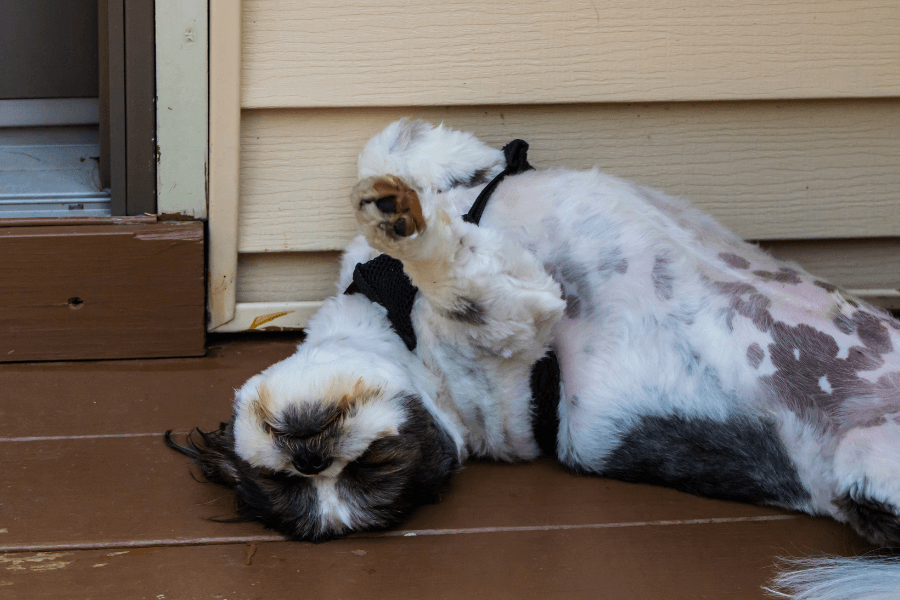
This time, not in smelly and gross stuff, just your dog rolling over randomly at your house. That vulnerable position says, “I trust you, and also, give me belly rubs.”
Rolling can also be part of their playful side. During games, it’s a fun way to mix things up and keep you guessing their next move.
However, rolling over isn’t always about fun. In stressful situations, it might signal submission. Context matters, so read the rest of their body language, too.
Why Do Dogs Dig Into Their Beds?

Circling and digging in their bed are throwbacks to their wild ancestors. They’re instinctively “nesting,” ensuring the spot is safe and comfy for snoozing.
This behavior also helps regulate temperature or make the space feel just right. It’s the dog version of us, humans, fluffing the pillows before we settle in.
One thing is important… it’s harmless and just a quirky ritual from dogs. We shall let them indulge in it. Just keep the plushies nearby for extra coziness!
Why Do Dogs Bark at Strangers?

Barking at strangers is your dog’s way of being a loyal protector. They’re saying, “Who’s this? Are they cool? Should I alert the pack?” Dogs are heroes! They don’t want you to be harmed.
Dogs are naturally born with their guarding instincts. They’re not trying to annoy you—they’re just doing their job as the unofficial neighborhood watch and man’s best friend!
Proper socialization can help reduce stranger-danger barking. But hey, a little bark now and then might keep those uninvited salespeople on their toes. They might think twice about harming you because of your guardian doggo!
Why Do Dogs Stare at You?
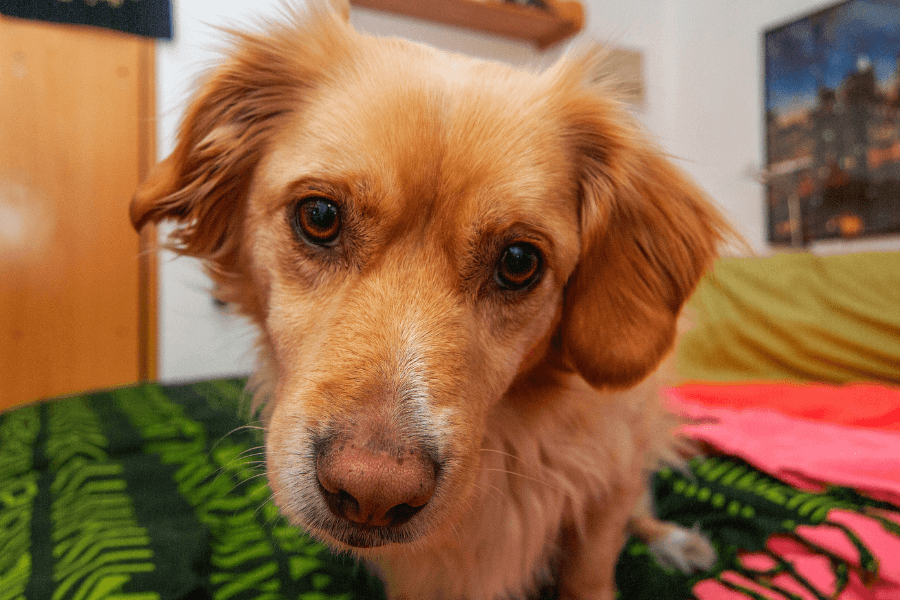
When your dog stares deeply into your soul, it’s often pure love. Eye contact releases both of you oxytocin, the bonding hormone, like a warm, fuzzy feedback loop.
Sometimes, the stare means they’re waiting for something: food, attention, or maybe just an answer to why you’re eating and they’re not! They’re too shy to ask for it, you know!
Staring can also mean they’re studying you! Get ready for a quiz. Kidding. Dogs are experts at picking up on human behavior. Basically, your dog knows you better than your therapist.
Why Do Dogs Hate Baths?
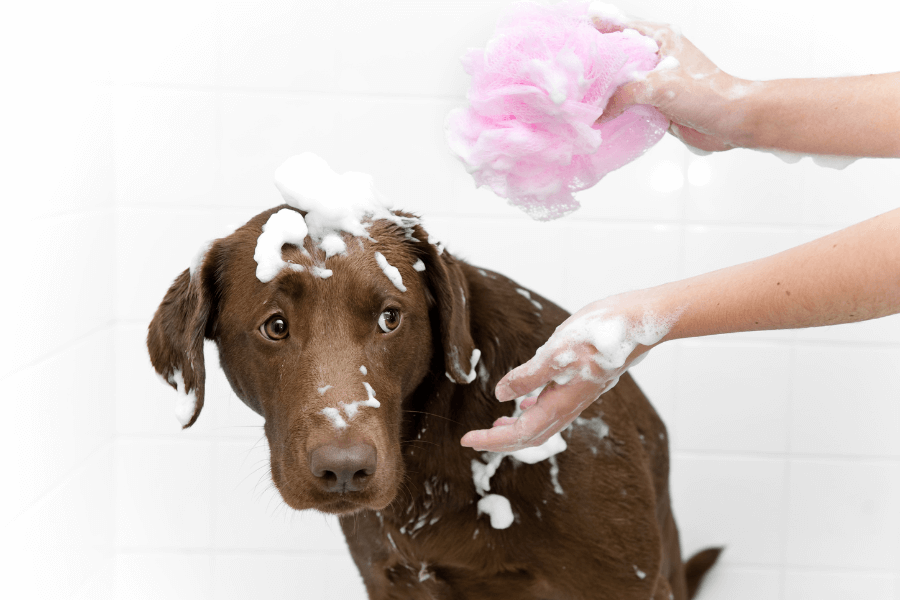
Baths can feel unnatural to dogs. Being restrained, wet, and soapy? Oh, not fun. It’s like a spa day they never asked for—or wanted. Who likes to do things when forced? No one!
Negative experiences, like cold water or slippery surfaces, can worsen baths. Adding treats and warm water can help change their mind. Maybe some toys, if you like!
If your dog’s still anti-bath, professional grooming might be the way to go. An experienced handler can sometimes turn bath time from a nightmare to a tolerable event.
Why Do Dogs Shake Their Toys?

When your dog shakes a toy violently, fret not; they’re just channeling their inner hunter! They’re trying to mimic how wild animals subdue prey in the wild. Fierce, right?
Toy-shaking is also pure entertainment for dogs. It’s fun, it burns energy, and it feels rewarding. Your dog thinks they’re in an action movie, starring themselves. Yes, they don’t want to devour you. Calm down.
While it’s harmless, they can still leave your living room littered with fluff if they conquer a less-than-sturdy stuffed animal. Make sure their toys are durable! Their jaws are strong!
Why Do Dogs Sleep So Much?

Dogs sleep more than humans because rest is essential for their health. Puppies and seniors can snooze up to 18 hours daily—it’s their way of staying recharged and happy.
Sleep patterns vary depending on their age, breed, and activity level. While some nap out of necessity, others do it simply because lounging is their favorite pastime.
But if your dog seems overly lethargic, it might be time for a vet check! You better not wait for too long before it gets worse. Know your pets’ conditions. Visit the vet!
Why Do Dogs Lean on People?

Seeing your dog leaning on you means they’re seeking comfort and closeness. Imagine them saying, “You’re my rock—literally and emotionally.” but through body language.
Leaning can also show trust. Your dog feels safe with you, even if their weight makes you wobble like a human seesaw. It’s the ultimate furry compliment!
Enjoy these moments of connection, even if it means losing your balance occasionally. Your dog’s leaning is just one of the many ways they show love.
Why Do Dogs Show Their Teeth?
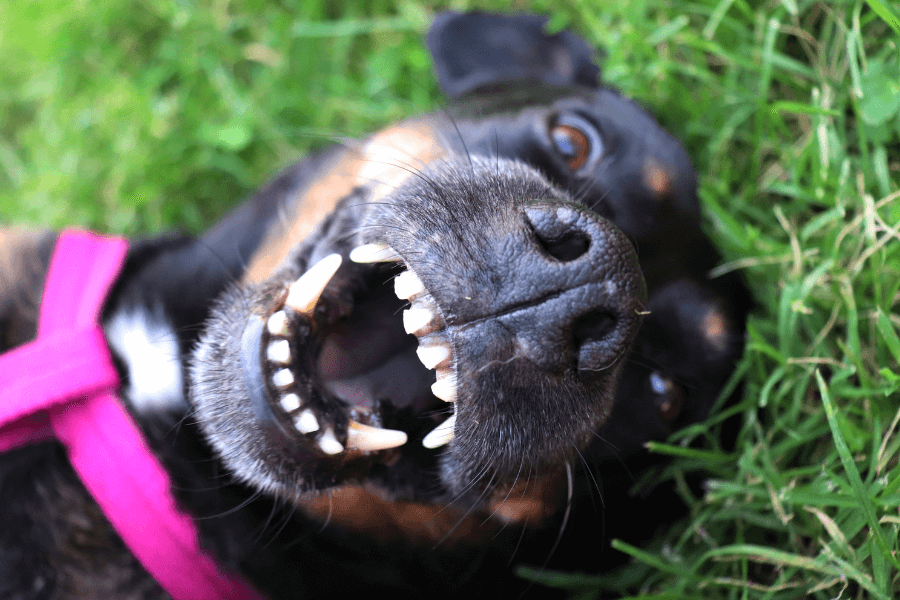
So, when dogs show their teeth, we don’t want you to always think it’s a sign of aggression. Sometimes, it’s just a “submissive smile,” their quirky way of saying, “Hey, I’m happy to see you!”
But in other situations, bared teeth might be… a warning! It could mean they’re uncomfortable or want some alone time, so always pay attention and respect their need for space.
Understanding context is crucial when having pets since they can’t speak. Ask yourself, “Is it a goofy grin or a serious growl?” Your dog’s expressions are key to deciphering their feelings in the moment.
Why Do Dogs Bark in Their Sleep?

Sleep barking is a sign your dog is dreaming. Yep, dogs dream, too. (Don’t think too special, humans.) During REM sleep, they replay their daily adventures or imagine chasing squirrels and catching tennis balls.
These nocturnal sounds are often accompanied by twitching or running motions. It’s adorable to watch, especially when they seem to be having the time of their life.
Don’t be anxious, just look after them. Let them bark and dream away—it’s completely normal. Don’t wake them, okay? Interrupting their dream of being the fastest runner in the park would be tragic.
Why Do Dogs Look Guilty?

The infamous guilty look isn’t a true admission of wrongdoing. Your dog reacts to your tone and body language, thinking, “Uh-oh, you’re mad—what did I do?”
Dogs don’t feel guilt like humans, but they’re experts at reading emotions. Those puppy eyes? Ah, that’s a survival tactic to appease you and, let’s face it, win you over!
Instead of scolding, redirect them to better behaviors. You’ll feel less frustrated, and they’ll keep perfecting that Oscar-worthy performance of innocence. Isn’t this tactic familiar? Girlfriends use their doe eyes, too!
Why Do Dogs Howl?

Maybe your dog is just confused sometimes that they think they’re wolves! But seriously, howling means channeling it. It’s a primal call, often triggered by sirens, music, or the mysterious, full moon vibes.
Sometimes, dogs howl to announce their presence or communicate with other canines. It’s like their version of social media status updates—”I’m here, and I’m fabulous!” Neighboring canines will notice them, too, by howling back!
In some cultures, the excessive howling of dogs is a sign of a bad omen, but clinically wise—it might just indicate loneliness or separation anxiety. Providing companionship or engaging toys can help curb their nightly serenades.
Why Do Dogs Yawn?
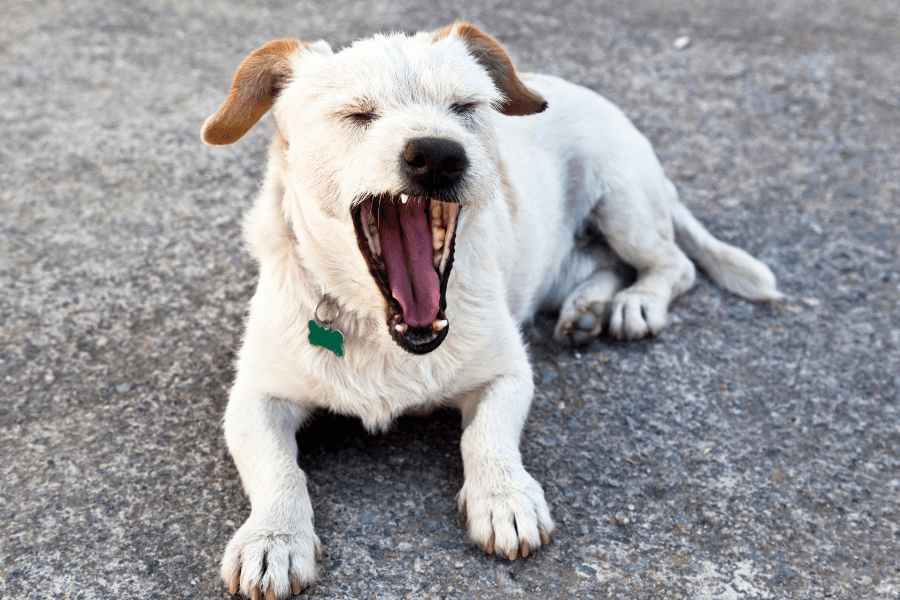
Dogs yawn not just when they’re tired but also to relieve stress. It’s their way of saying, “This situation is a bit much; let’s all chill out. I’m gonna yawn, excuse me.”
Yawning can be contagious between dogs and humans, showcasing their empathetic nature. They might join in when you yawn, thinking, “Oh, we’re doing this now? Cool.”
If your dog frequently yawns in certain situations, it might signal discomfort. Pay attention to the context to ensure they’re feeling safe and relaxed.
Why Do Dogs Lick Their Lips?
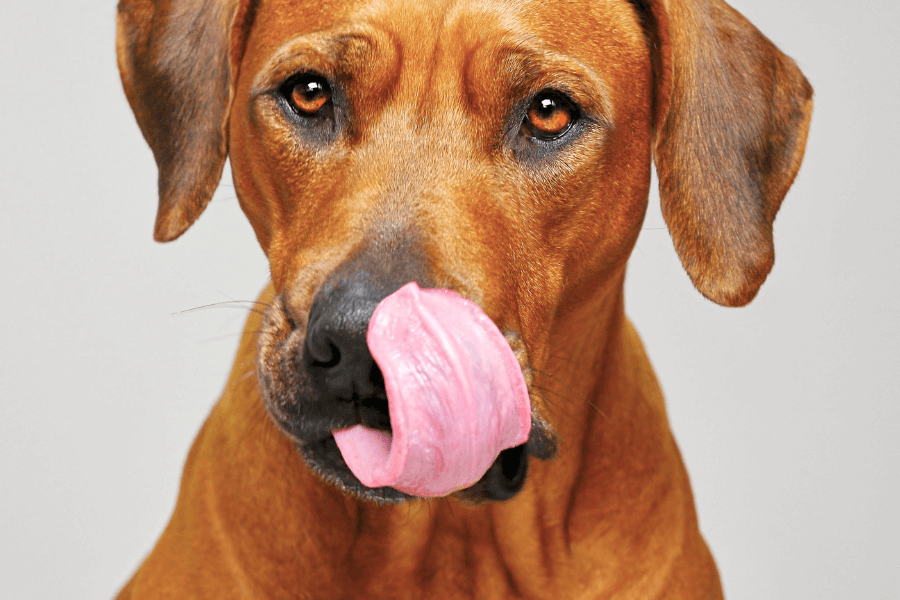
Lip licking in dogs often indicates anxiety or submission. (Unlike humans, that could mean seduction.) It’s their subtle way of saying, “I’m a bit nervous, but I’m not a threat—I’m being friendly.”
After a tasty treat, lip licking is just a cleanup duty, like how we humans lick our fingers after eating popcorn! But in unfamiliar situations, it’s more about calming themselves and communicating peaceful intentions.
Observing this behavior can help you gauge your dog’s comfort level. If they’re licking their lips around new people or places, offer reassurance and a comforting environment.
Why Do Dogs Raise Their Hackles?
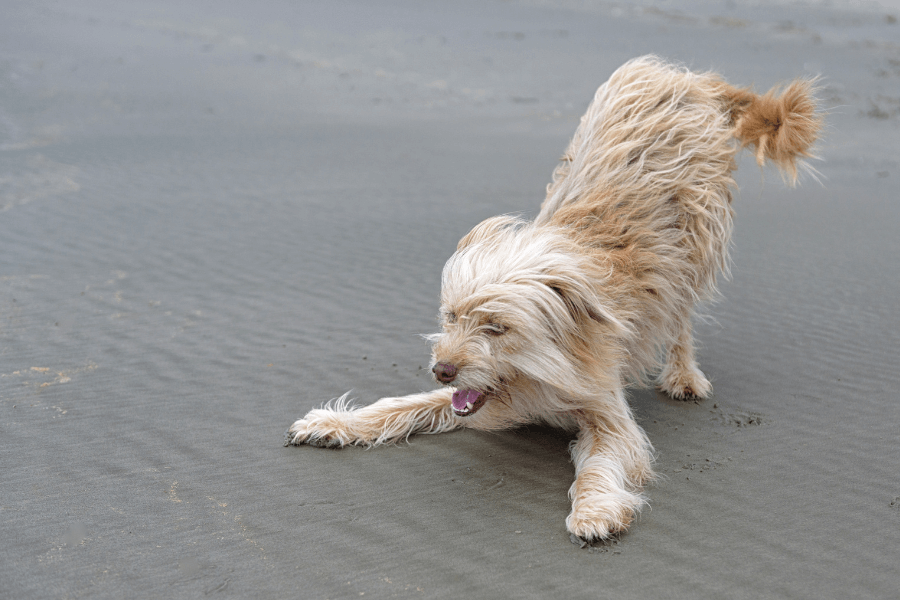
When a dog’s hackles rise, it’s an involuntary reaction called piloerection, indicating arousal. They might be excited, alarmed, or unsure—like their version of goosebumps.
Let us clarify. This doesn’t always mean aggression. Dogs can raise their hackles during play or when encountering something new. It’s more about heightened awareness than hostility.
Understanding the context and accompanying body language helps decode this behavior. Combine hackles with a wagging tail? Probably playful. With a growl? Best to give space.
Why Do Dogs Hump?
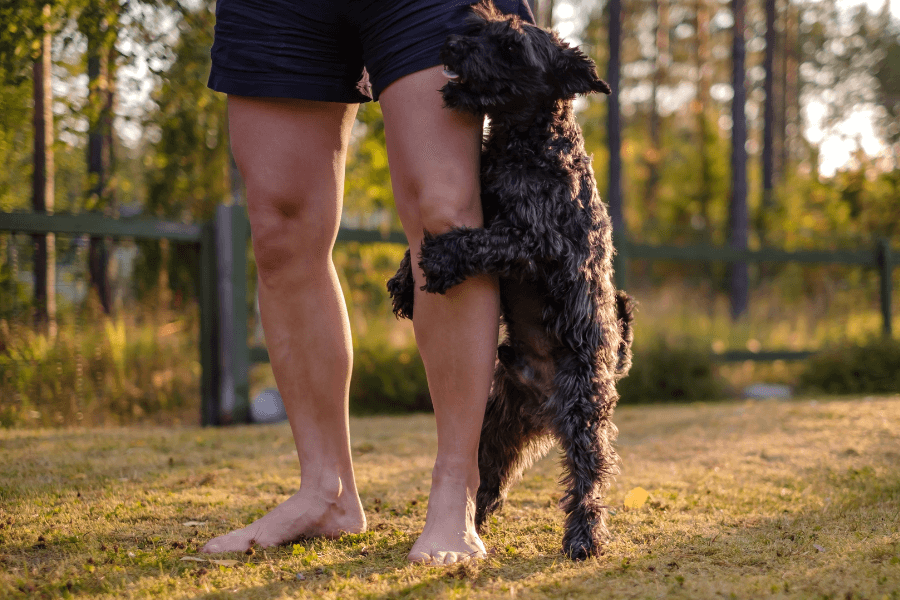
Dog humping makes you think about dominance or mating instincts. But did you know dogs also hump when they’re excited, stressed, or seeking attention? It’s their awkward way of saying, “Notice me!”
Puppies often hump during play as they explore social boundaries. It’s a phase most outgrow, much like human teenagers with embarrassing habits. We were young, we probably didn’t know what we did was embarrassing.
Yet, if your dog keeps humping, especially toward people, it might need gentle redirection and training. It’s not something you should panic about. Remember, they’re not trying to embarrass you—it’s just doggy behavior.
Why Do Dogs Eat Poop?
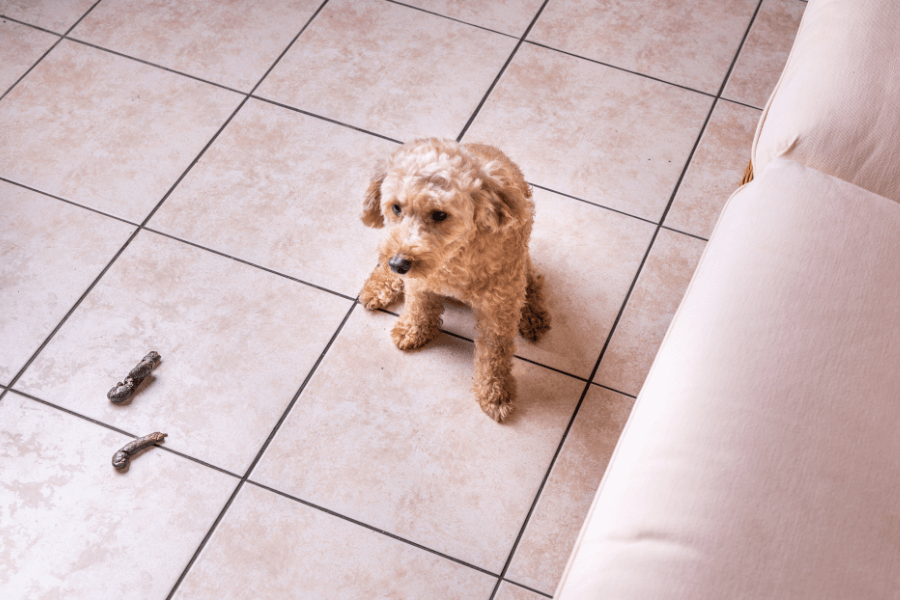
As gross as it seems, poop-eating, or coprophagia, is relatively common in dogs. They might do it out of curiosity, hunger, or to keep their area clean.
Some dogs learn this behavior from their mothers during puppyhood. Others might develop it due to dietary deficiencies or simply because… they think it’s a delicacy. (We saw what your face did there.)
Ensuring a balanced diet and keeping their environment clean can reduce this habit. If it persists, consulting a vet can help rule out underlying issues.
Why Do Dogs Shake Their Heads?

Head shaking helps dogs clear their ears of debris, water, or irritants. It’s their built-in mechanism for maintaining ear hygiene without Q-tips. (Q-tips are harmful anyway! Head shaking is better.)
Also, we want to warn you that frequent head shaking might indicate ear infections, allergies, or parasites. If your dog’s doing the headbanger routine more often, a vet check is advisable.
Occasional shakes are normal, like how dogs shake their heads after bathing or swimming. What we want you to watch out for is excessive shaking, which could signal discomfort needing attention.
Why Do Dogs Sneeze During Play?

Play sneezing straight up means the dog is having fun. It’s a communication tool to indicate their playful intentions and keep the mood light. Human, play with me more!
These sneezes are usually short and sharp, differing from regular sneezes. It’s like their built-in laugh track during a wrestling match. Unique, right? We can’t imagine humans sneezing when having fun!
If sneezing becomes frequent outside of play, it might indicate allergies or nasal issues. But during playtime, it’s just part of their joyful expression. So, you have nothing to worry about!
Why Do Dogs Expose Their Belly?
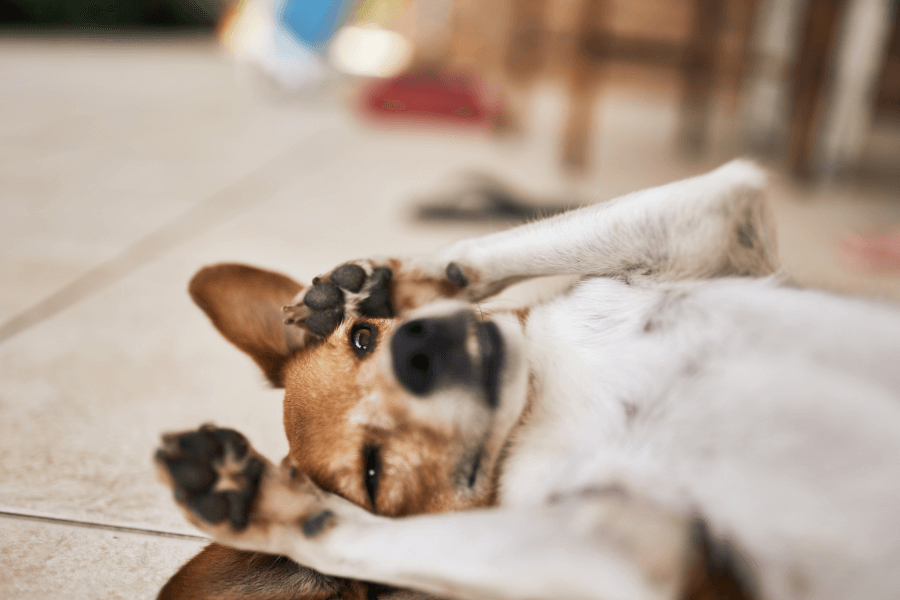
When a dog shows their belly, it shows trust and submission. They’re saying, “I feel safe with you,” and also, “Belly rubs, please!” The most adorable thing you can do to your dog!
This vulnerable position indicates they don’t feel threatened. It’s one of the highest compliments your dog can give—total relaxation in your presence. Note: highest! Give them belly rubs when they ask for them.
However, if they expose their belly around unfamiliar dogs or people, it might be appeasement behavior. They might not want trouble. Reading the situation helps determine their comfort level.
Why Do Dogs Grunt and Sigh?

Grunts and sighs are signs of contentment. When your dog flops down and lets out a big sigh, they’re saying, “Ah, this is the life. I’m in the right place.”
These vocalizations can also indicate relaxation after play or a meal. It’s their way of expressing satisfaction without words. Like us, we rub our tummy to convey we’re full!
If accompanied by other signs of discomfort, grunts might indicate pain. But generally, a sighing dog is a happy dog, enjoying the moment. (Don’t you sigh when you see your loved one so attractive?)
Why Do Dogs Scratch the Floor?
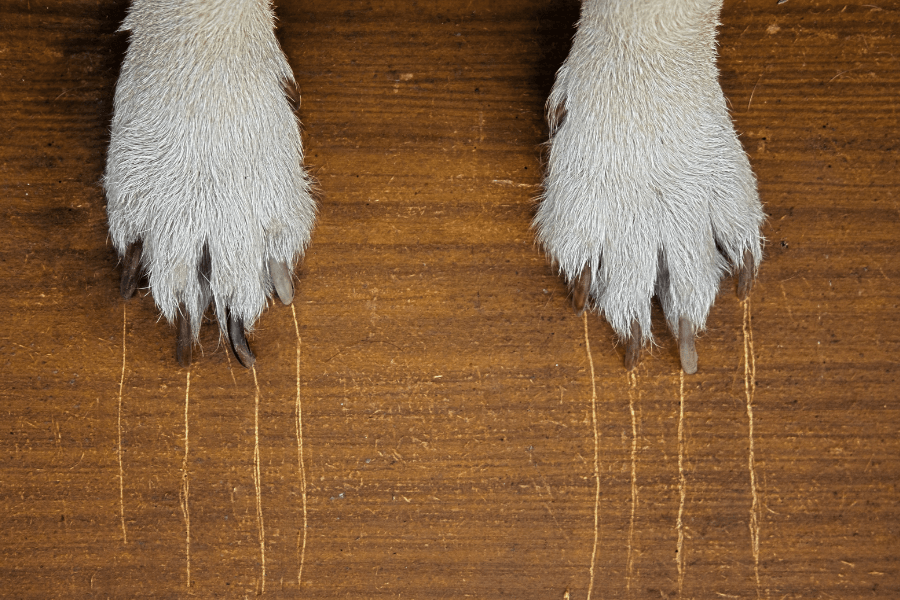
Scratching the floor is an instinctual behavior from their wild ancestors. They’re “digging” to create a comfortable sleeping spot or mark territory with scent glands in their paws.
Even on your living room carpet, this behavior surfaces. They wouldn’t know the difference. It’s their way of arranging their space, saying, “This spot feels just right now.”
Don’t want your bed ripped to pieces? Provide a designated digging area or comfy bed that can satisfy this instinct. It’s all about making their environment feel like home.
Why Do Dogs Paw at You?
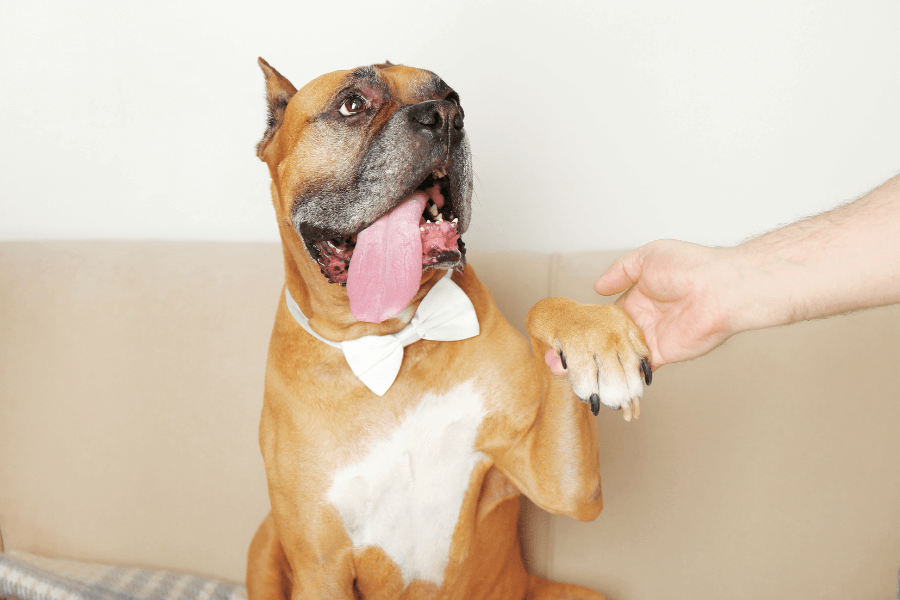
When your dog paws at you, they’re seeking attention or expressing a need. It’s their gentle nudge saying, “Hey, notice me!” or “I could use a snack.”
This behavior can also signify affection, similar to holding hands. They’re reinforcing the bond and reminding you they’re there. Aww, so cute. Our hearts are melting here.
Give your dogs the attention they need, and don’t make them wait for too long if they ask for simple affection. Hold their paws and give them a big hug!
Why Do Dogs Huff?
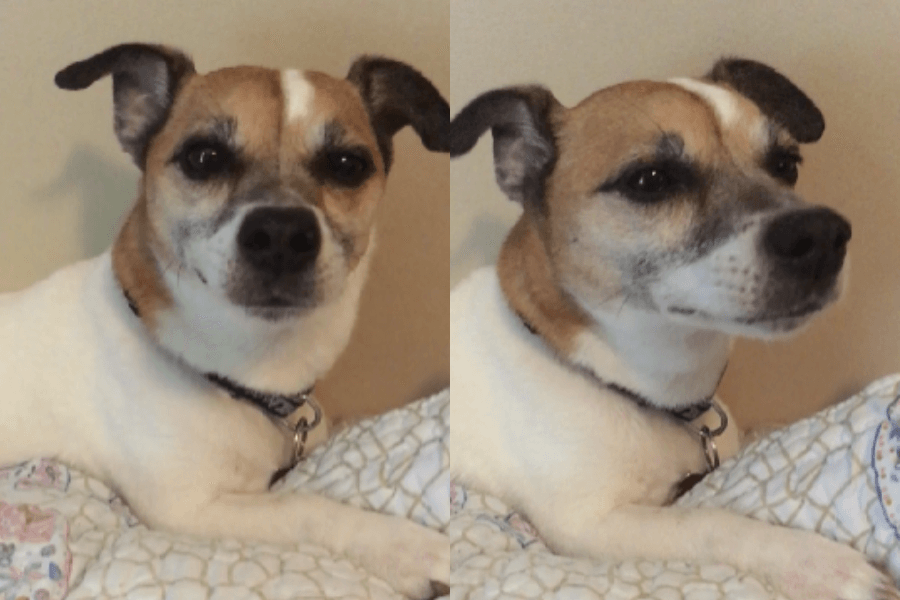
Huffing is a form of communication expressing excitement, frustration, or impatience. It’s their way of saying, “Come on, let’s get moving!” or “I’m so over this.”
This vocalization is usually short and forceful, unlike a growl or bark. It’s like a sigh with attitude, conveying their current mood. So, yes. It’s quite an unpleasant reaction.
Understanding the context helps interpret their huffs. Don’t immediately conclude, or you might get it wrong. Responding appropriately strengthens your communication and keeps your dog feeling understood.
Why Do Dogs Nudge with Their Nose?

A nose nudge can mean seeking attention, herding behavior, or checking out something intriguing. (You’re probably intriguing to your own dog!) It’s their way of interacting and exploring.
Nudging helps keep the “flock” (including you) in line in herding breeds. For others, it’s a gentle prompt to say, “Hey, I’m here—what’s up?”
Recognizing this behavior fosters better interaction. Since understanding dogs doesn’t come with a dog dictionary, we really have to be critical and observant at some point.
Why Do Dogs Kick Their Legs When Scratched?
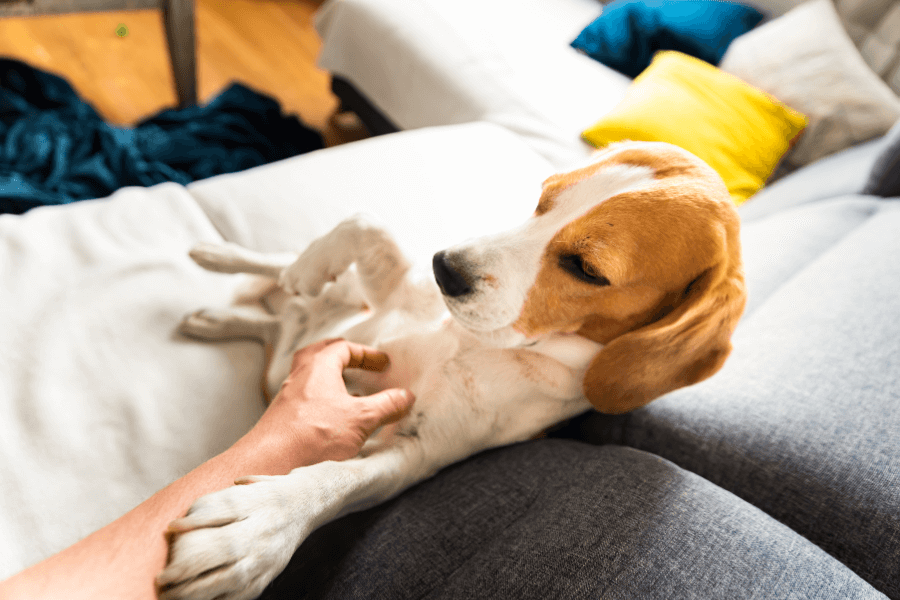
That hilarious leg-kicking during a belly scratch isn’t intentional—it’s a reflex! The scratching triggers nerves connected to their spinal cord, resulting in an automatic kick response.
This reaction is completely harmless and often entertaining. It’s like their ticklish spot, and they don’t mind showing you just how effective your scratch is. Honestly, it looks so cute.
Some dogs seem to enjoy it, while others might get up and walk away. If they love it, keep scratching—just don’t overdo it and irritate their skin.
Why Do Dogs Carry Food Away From Their Bowl?

Dogs may take food away from their bowl to eat because of instinct. In the wild, eating in a secure, secluded spot ensures their meal isn’t stolen.
Sometimes, it’s about comfort. Your dog might feel more relaxed munching near you, or they simply prefer to eat on the soft carpet (to your dismay).
If it’s not causing a mess or trouble, this behavior is harmless. If it gets out of hand, try serving smaller portions or making their dining area more appealing.
Why Do Dogs Spin Before Pooping?
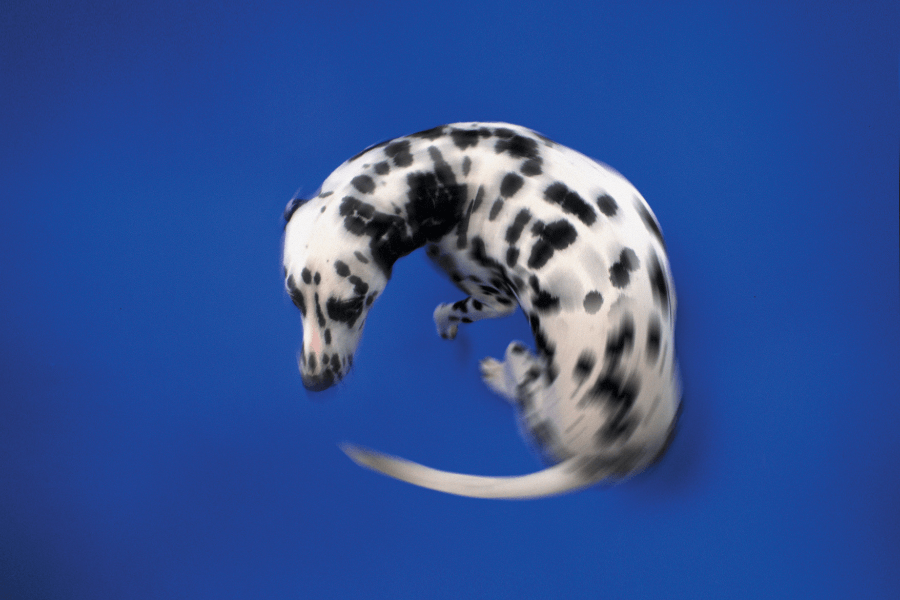
Spinning before pooping is another instinct passed down from their wild ancestors. It helps them check the area for safety, ensuring there are no lurking predators or threats. Dogs just want to poop in peace!
This behavior might also help them align with the Earth’s magnetic field—yes, really. Don’t laugh. We’re not joking. Studies suggest dogs prefer to face north or south while doing their business.
While it might make walks a bit longer, it’s a harmless ritual. Let them have their pre-poop dance; it’s all part of the process. Weird, I know. It’s because we’re humans, and they’re dogs.
Why Do Dogs Twitch in Their Sleep?

Twitching during sleep is common and usually occurs during the REM phase when dogs dream. It’s a sign they’re deeply relaxed and replaying their day’s adventures.
You might see their paws move like they’re running or hear faint barks and whimpers. It’s their dreamland highlight reel, starring themselves as the hero.
It’s completely normal, and you can let them twitch away. Unless it’s excessive or accompanied by distress, there’s no need for concern. They’re just adorable.
Why Do Dogs Perk Up Their Ears?
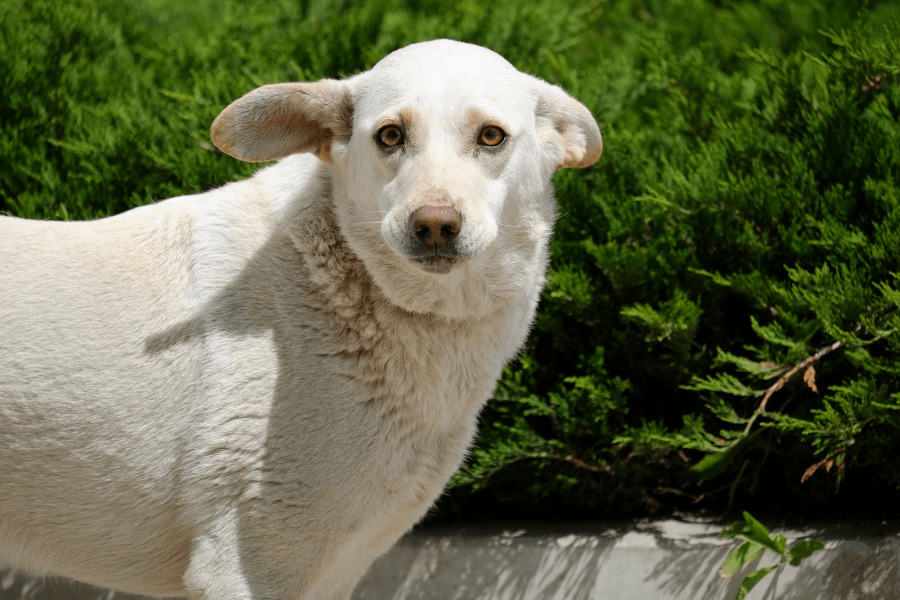
When your dog perks up their ears, it tunes into something important. Their acute hearing helps them catch sounds far beyond your range, like distant footsteps or rustling leaves.
This behavior can signal curiosity, alertness, or even excitement. It’s their way of saying, “Something interesting is happening—should I investigate or just look majestic?”
If their ears stay perked with tense body language, they might feel unsure or protective. It’s always worth paying attention to what’s caught their attention! Regardless of how you see it or not.
Why Do Dogs Lie on Your Feet?
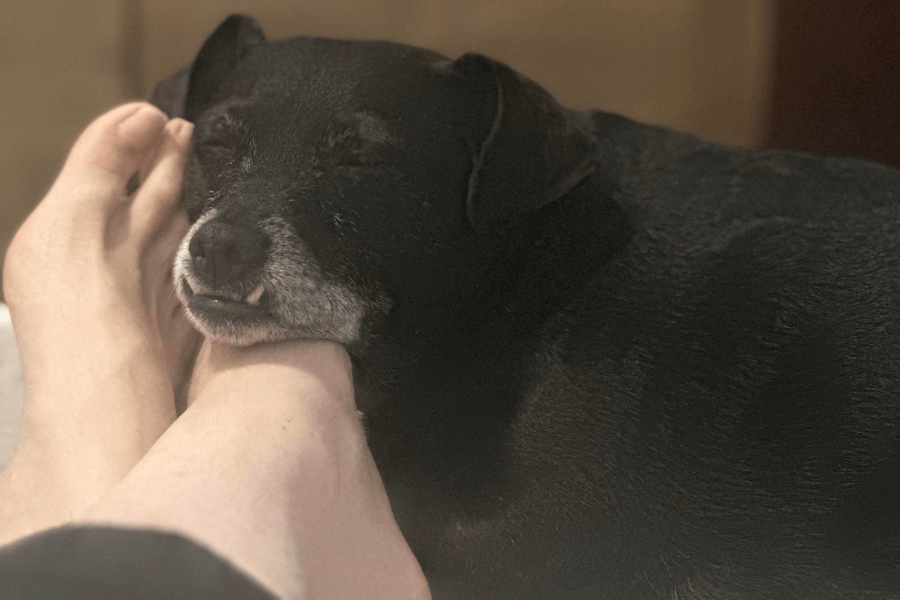
If humans tend to be possessive, dogs are not an exception! When your dog lies on your feet, it marks you as their territory. This human is mine, and I’m sticking close!
It also provides them with comfort and security. Being physically near you reassures them that their pack is intact and they’re safe. Yes, our presence means safety to our dogs!
While it can be inconvenient because you probably can’t move, it’s a sweet sign of their love and loyalty. Just don’t trip over them when you try to stand up!



